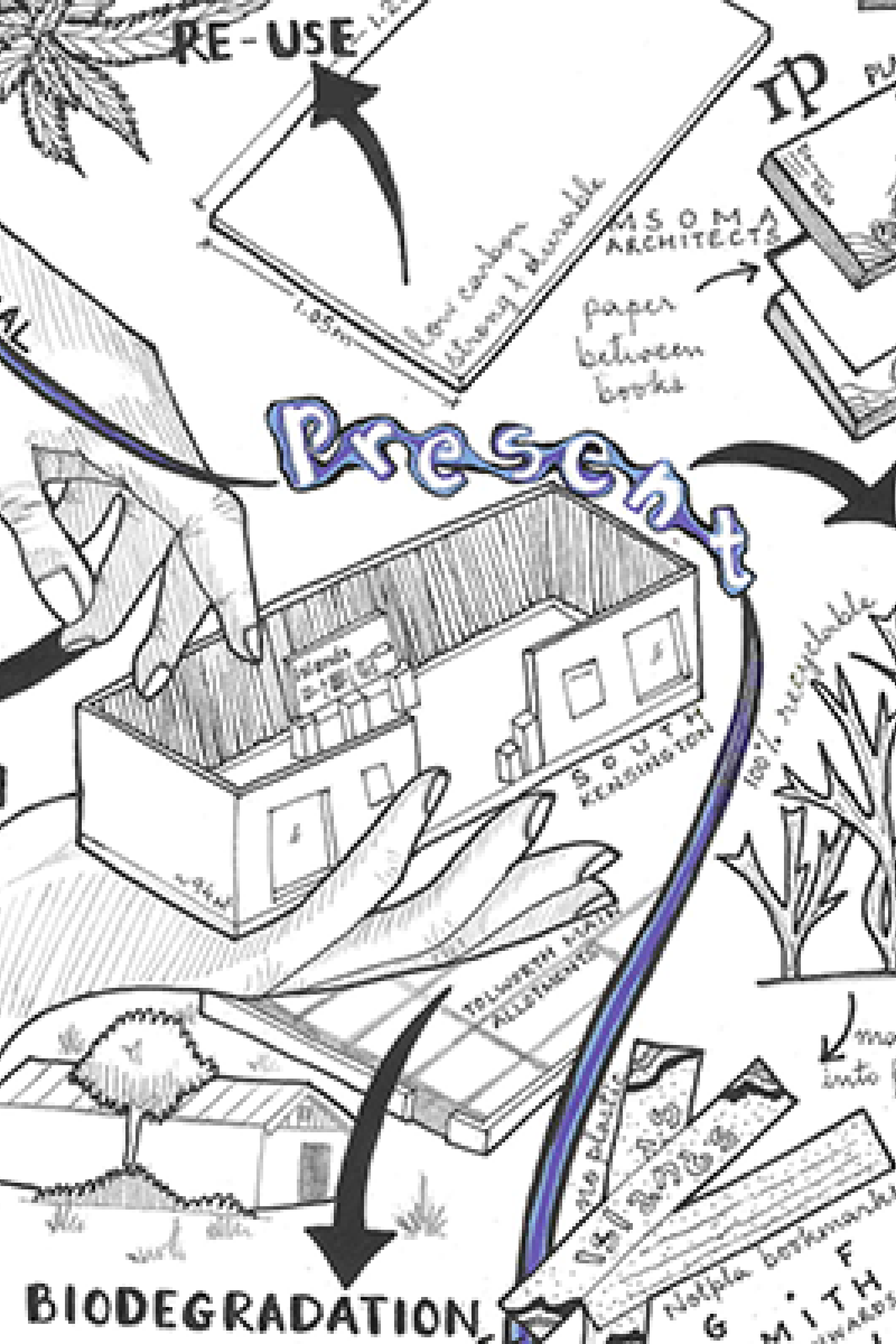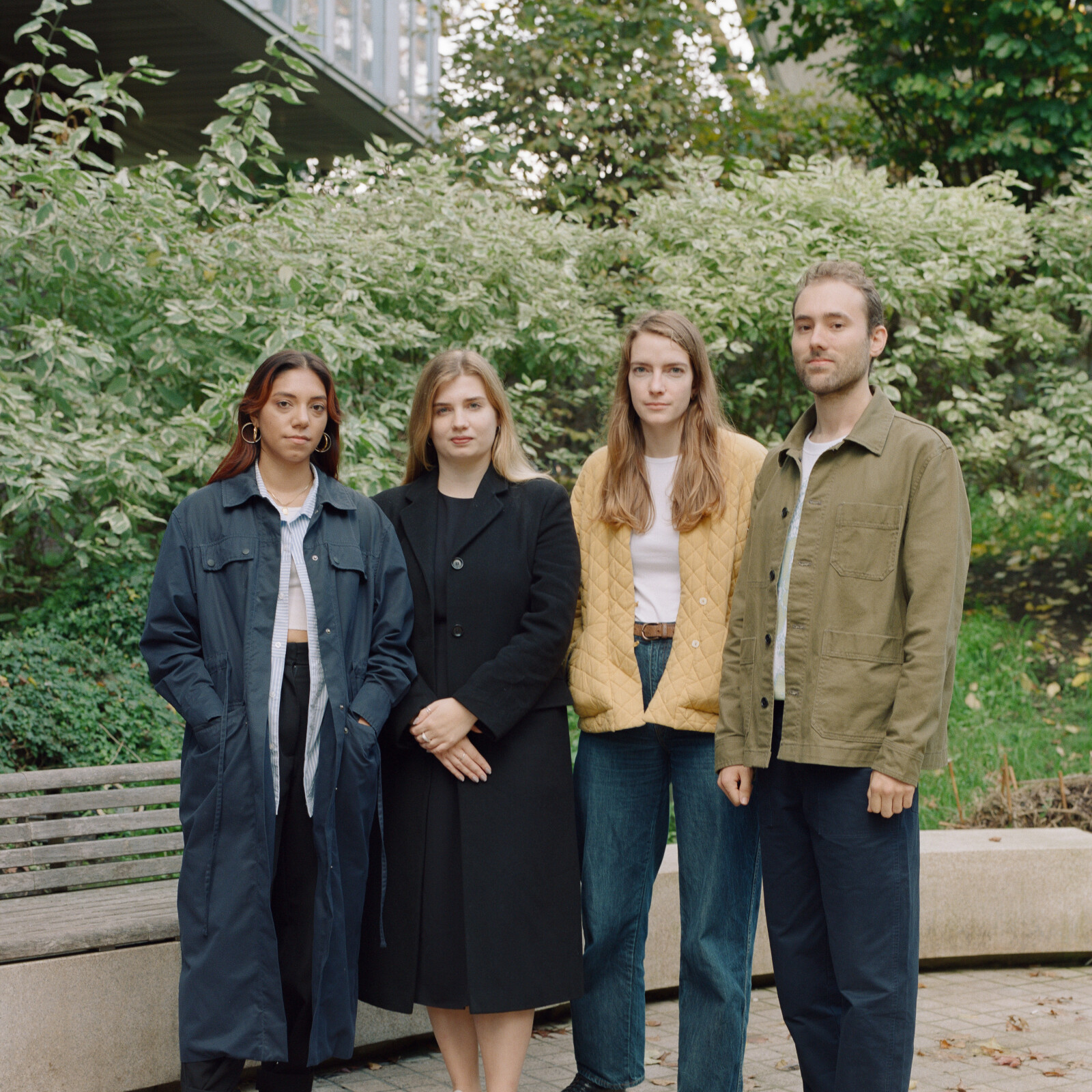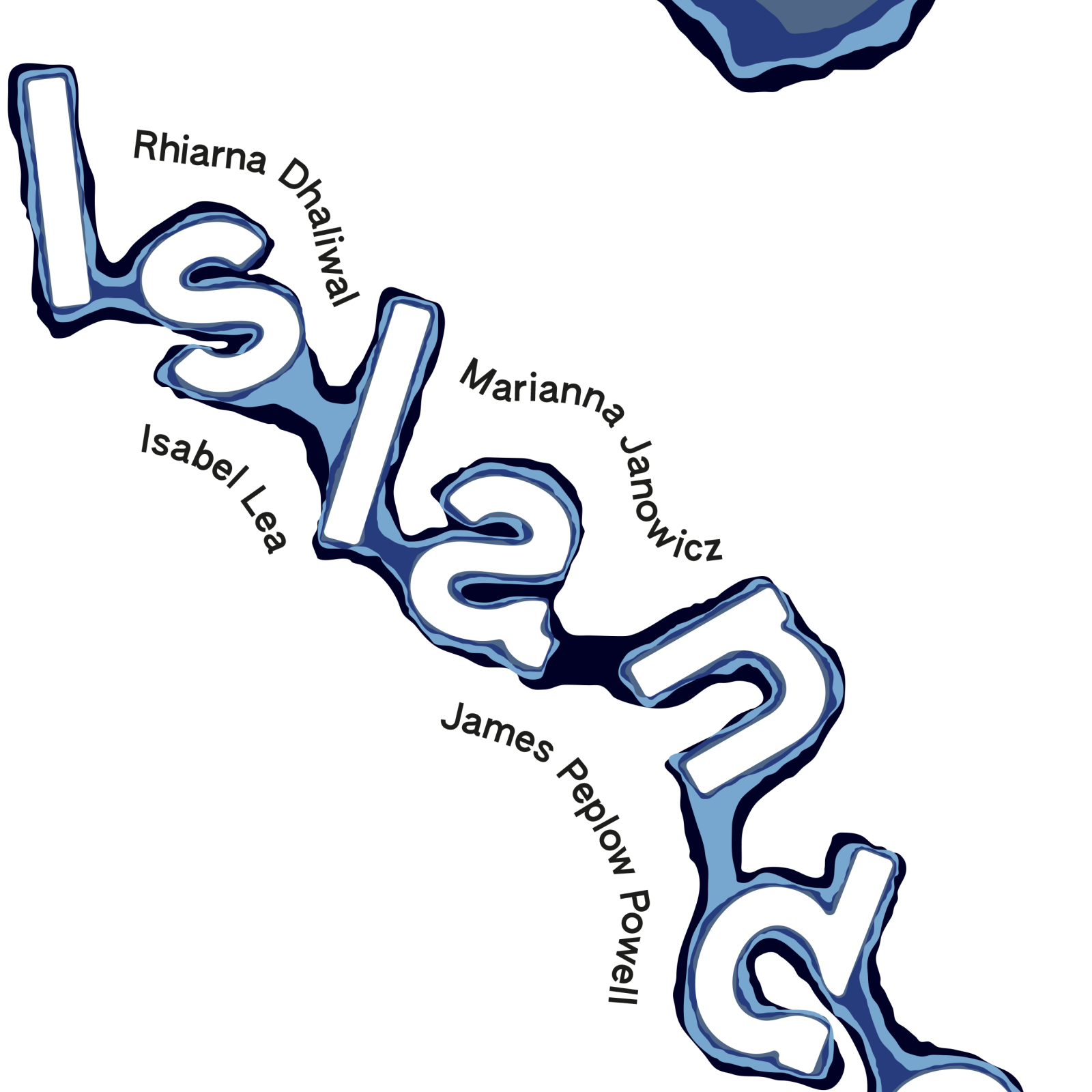At the Design Museum, an exhibition is more than its exhibits. It encompasses the build, as well and the invisible hands – the curatorial and administrative teams, collaborators, 2D and 3D designers and other studios and individuals – who carefully curate and put it together.
This drawing, completed by Liesl Maria Bragança during a student placement with Future Observatory, maps the stories behind the materials used for Design Researchers in Residence: Islands — a free display at the Design Museum this summer. The drawing highlights some of the environmental questions that influenced the design of the display.

Where did the materials come from? How are they being used within the exhibition? And what might their future look like? What can be re-used or recycled once the display has been taken down? And how can we care for, repair, and maintain them so as to avoid buying new ones? It was crucial to map each element from its source to its present role within the exhibition and its future beyond, to understand what has been done and what might be done better.
RE-USE
Repurposing materials to be used again and extending their life cycle is a very environmental conscious decision and process. It reduces the carbon footprint as well as saves energy and costs of buying new materials.
In the Islands exhibition, the many sheets that arrived between printed books were re-used to make the flipbooks for the climate audit, while the hempboard that was used for signage in the display was used at its maximum dimensions, without cutting in order to reduce waste in production and so that they could be re-used beyond the exhibition.
The hempboards came from Margent Hemp Farm, Cambridgeshire. The books were designed by Plan B Studio and printed at Plaintiff Press.
RECYCLE
Recycling reduces the need for new materials, reprocessing them to be re-used elsewhere. It cuts the amount of waste being generated daily, breathing new life into resources that can be repurposed and converted into new products, which otherwise would end up in a dump yard after a single use. Recycling also reduces the need for extraction, refining and processing of raw materials, greatly contributing in saving energy, reducing greenhouse gas emissions and our carbon footprint, all of which helps in tackling the ill effects of climate change.
In the exhibition, the remnants left over from the industrial processing of seaweed were recycled into paper for the bookmarks, which in turn is 100% recyclable. Blue-pleated curtains were made from deadstock material and can be recycled again. All of this strengthens the circular economy leading to a sustainable future.
The bookmarks were made from Notpla paper manufactured by G.F. Smith, London. The deadstock material came from a local warehouse in London.
PRESERVATION
Museums are a place in which objects of historical, artistic, scientific, or cultural value are preserved and exhibited, extending their life-span. Likewise, the materials that are used within the exhibition build are refurbished and re-used which in turn reduces costs of processing and transporting new materials. Preservation often can be difficult and expensive but provides the greatest long-term benefit for the materials and reduces the need to buy new.
At the Design Museum, materials, and equipment such as tools, wooden platforms, trolleys, ratchet straps etc. are preserved in good condition, and if required, are repaired at the museum workshop by the technicians to be re-used within the exhibition build. The maintenance staff ensure that the exhibition space is cleaned regularly and maintained in perfect condition to welcome visitors each day. Faulty or broken elements are repaired and reinstalled allowing the exhibition to carry on smoothly.
BIODEGRADATION
Biodegradation ensures that materials used in construction can be broken down or dismantled easily without harming the environment, returning back to the earth, and if possible, can be re-used elsewhere.
The Islands exhibition used rammed earth plinths made entirely from clayey soil, aggregate and water. After the exhibition, these plinths will naturally biodegrade, returning to earth from which they were made. Using rammed earth plinths eliminated the need to use acrylic plinths to hold up objects/ elements as exhibits during the exhibition, which is the usual go-to option at museums.
The rammed earth plinths were designed and brought to life by 121 Collective, Tolworth.
Liesl Maria Bragança is an architectural designer and researcher currently studying for a Master’s degree in Architecture at Central Saint Martins, University of the Arts London. This work was produced as part of a student placement with Future Observatory from July to September 2023.




